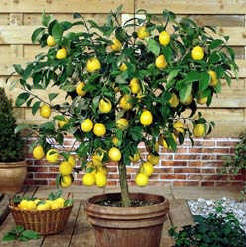
Citrus Fruit

Citrus fruits are known for their fragrant aroma that can relieve stress and relax the soul and body. They are healthy and have a lot of benefits if consumed on a regular basis. The leaves and buds are used for producing herbal medicines and are known to cure a lot of ailments. Some of them have natural medicinal properties besides providing fruits all through the season.
Most citrus fruits have distinct flavours. They are typically evergreen trees and can grow to a height of about 25 feet. A lot of citrus trees like grapes, lime and mandarins are found to grow best in the warmer climate regions. The quality of the fruit can vary, even with the slightest change in temperature. The Gulf coast is best known for its tender juicy mandarins, as it has temperate weather throughout the year.
The taste and colour of the citrus fruits would depend on the temperature of the region so care should be taken to keep the temperature constant at 20 degree Fahrenheit. Seasonal changes have a direct impact on the produce of the citrus trees.
Why grow citrus trees?
A medium sized citrus tree could provide fruits for a maximum period of 4 – 5 months. They are rich in vitamin content and have been seen as a natural herb for curing many ailments.
Choosing a tree
It is better to get a fully grown sapling as it is easier to spot blemishes and other defects. Select a sapling that has wide spread of branches with shiny leaves.
Soil and fertilizers
Citrus trees generally grow best on acidic soil. You can add pine bark along with manure to increase the acidic condition of the soil. There are a lot of fertilizers that are available on the market for citrus trees.
Giving the right amount of water and fertilizers will keep the tree healthy and free from insects and other pests.
Where to plant
- Citrus trees need to be sheltered from the harsh rays of the sun and stormy winds. Plant trees in a south facing plot to expose them to the needed warmth and shade. It is best to plant them beside a fence as it would lend support as well as shelter.
- Spring is considered to be the best time for planting them.
- The situation should not get waterlogged and should have a good drainage system.
- A hole of about 2- 4 feet should be dug to hold the soil and manure that would firmly support the sapling.
- It is best to leave 2 or 3 inches above the ground for the manure to be evenly spread out.
- Apply enough mulch around the base to keep the water out and this would also help in keeping the insects at bay.
- Most citrus fruits trees need to be pruned regularly to prevent the branches from colliding with each other.
Maintenance and care for citrus trees
- Water them regularly as it takes time for the roots to develop and spread beneath the ground. For any tree to mature, it can take between 3-5 years. The citrus tree needs to develop strong roots and healthy leaves for producing quality fruits.
- As the tree develops there should be tiny buds that would start to blossom during the early winter. The buds will open during spring releasing a subtle fragrance.
- The buds later develop into fully grown fruit and will take weeks to reach a ripened stage.
- It is very important to maintain a constant temperature and to provide the needed moisture for better fruit.
- It is also essential to provide enough water, shade, and minerals for the citrus tree to attain a mature stage.
Pruning
Proper pruning has to be done for the branches to spread out and grow in an orderly fashion.
This is the easiest way to prune citrus trees.
- Do nothing until the tree is as tall as you want it to get. Under ten feet is best.
- Top the tree when it reaches the desired height. This just means to cut straight across the top. This forces the tree to branch out and become bushy.
- Trim the tree to maintain the bush shape every year just after it fruits.
- These bushy little lemon and orange trees produce tons of low hanging, easy-to-pick fruit.

